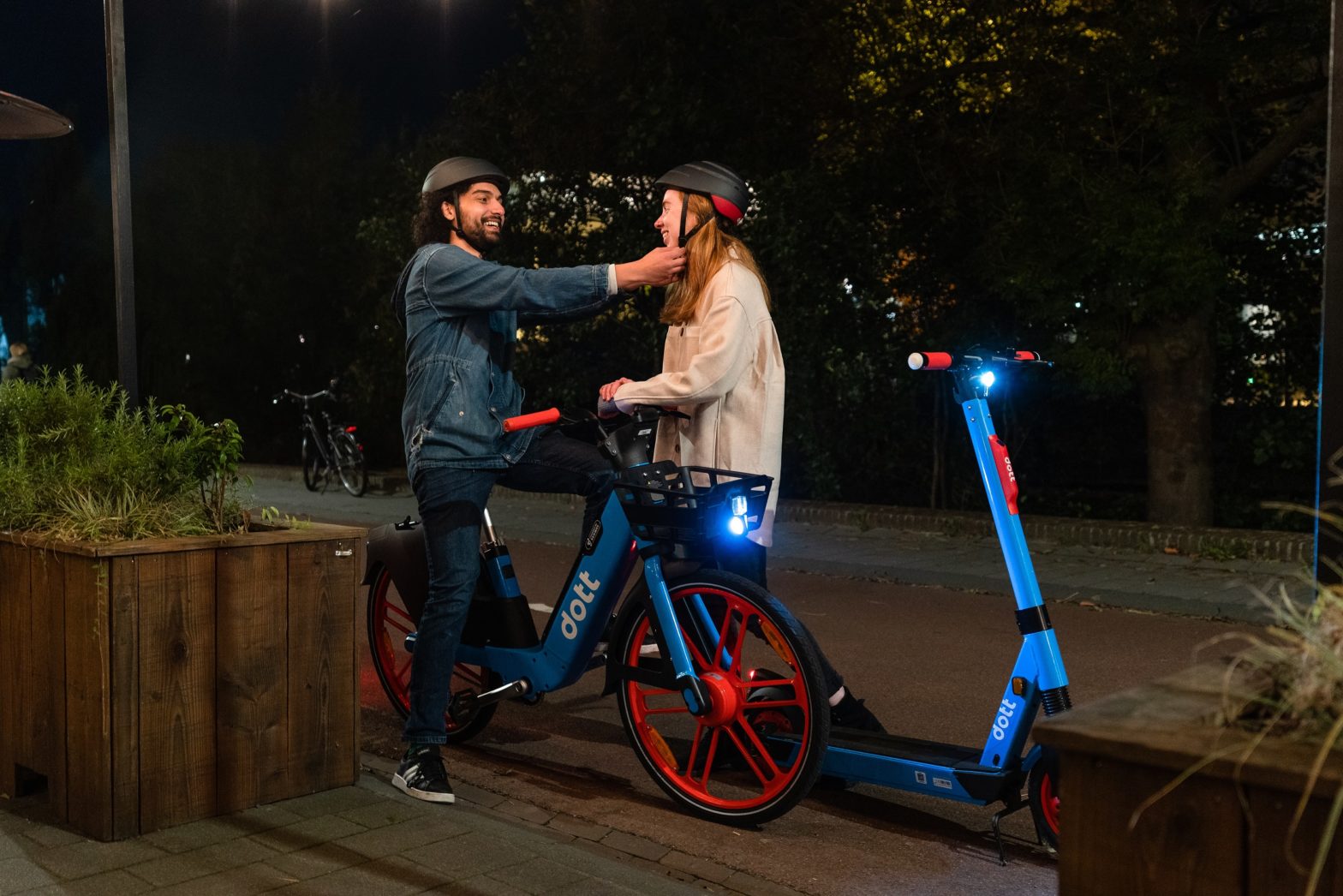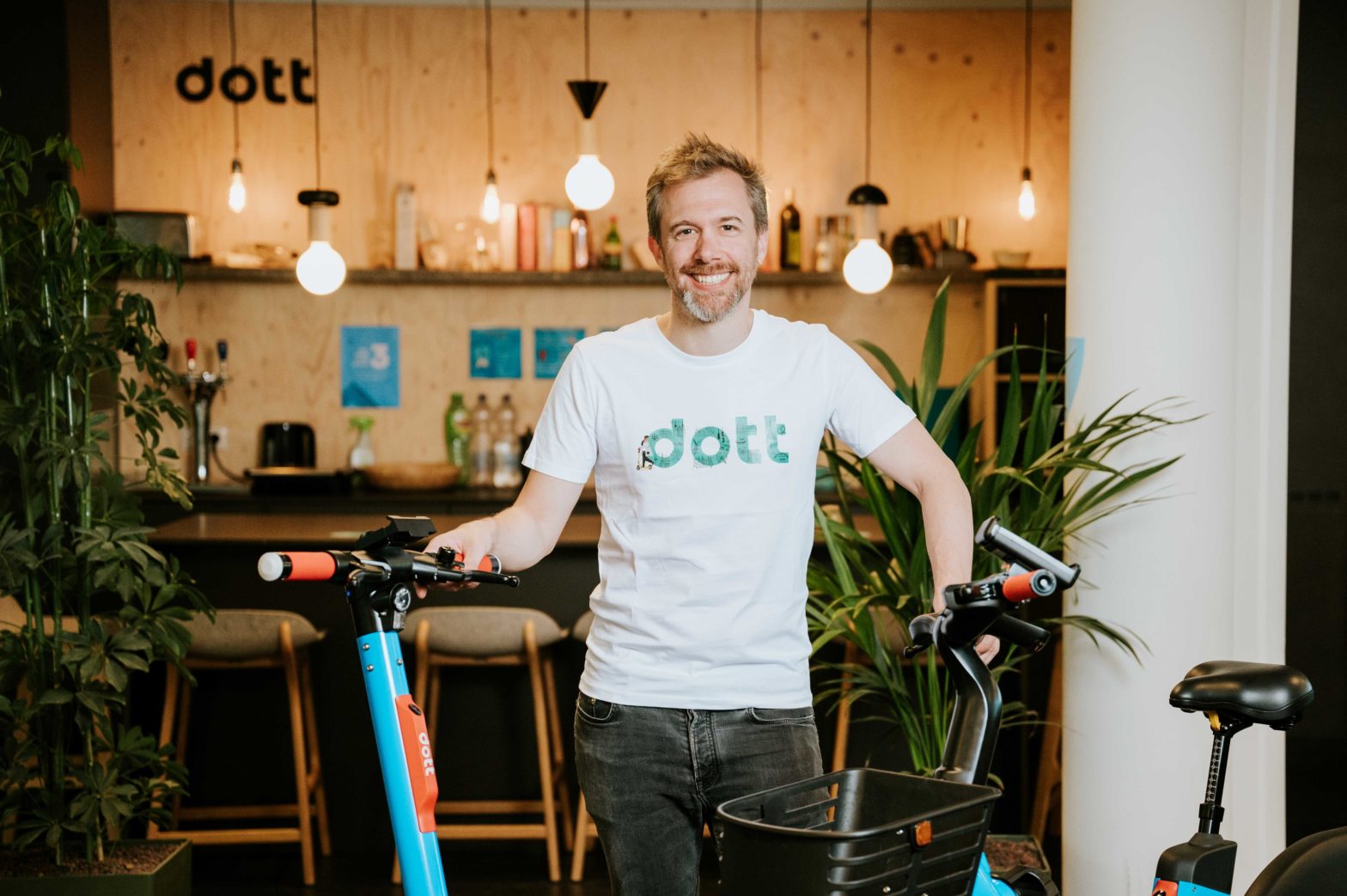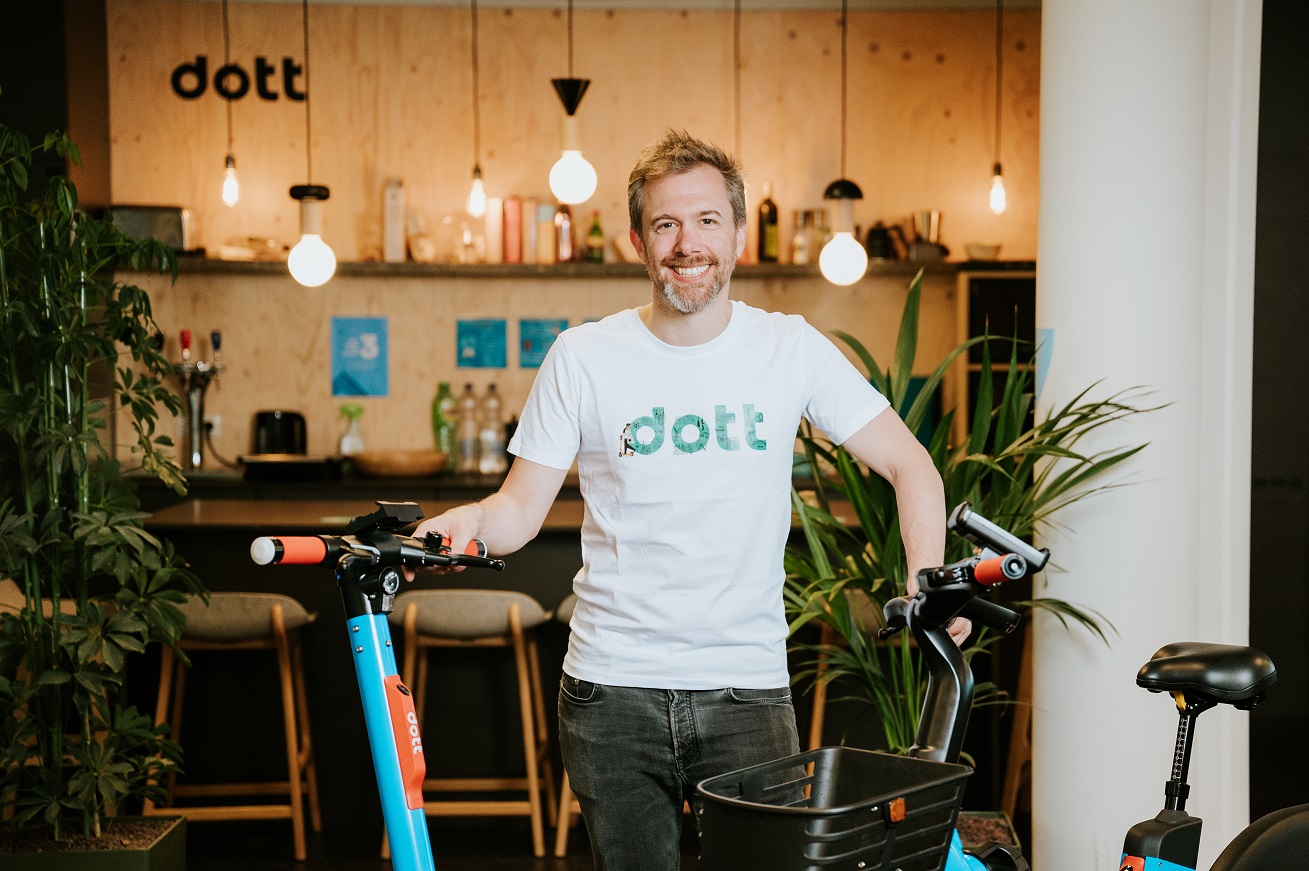
Micromobility: Safety for all
08 March 2022
For shared micromobility to become a service that people use every day, our vehicles (e-bikes and e-scooters) must be safe, all the time, for both users and pedestrians.
Achieving safety for all not only requires the use of smart technology, but great teams to reliably run local operations.
This is what Dott focuses on. We leverage technology where it makes sense to deliver a safe service such as with smart parking technology, real-time speed control, predicting vehicle maintenance and self-diagnosing features. But we first rely on our own in-house operations using only full-time employees that are fully trained by us, not using third parties gig economy labour. This delivers a higher quality service and safer operations on the ground.
It is this combination of strong local teams supported by smart technology that enables us to offer a safe service to everyone every day.
Let’s see how we ensure safety in practice through the different dimensions of our shared micromobility service.
A professional team
 It starts with people. We strongly believe in the value of recruiting our own local team, on full time contracts, and making them shareholders of the company.
It starts with people. We strongly believe in the value of recruiting our own local team, on full time contracts, and making them shareholders of the company.
When someone joins Dott, we train them on safety and their job. We provide a safe and welcoming working environment. And during employment we offer additional training such as our “Ride your future” programme which provides our teams with long-term skills for better opportunities both at Dott and in their broader career.
When team members are well treated and feel pride in what they do, they also then act accordingly. They make sure the vehicles are safe to use. They stop on the street if they see a vehicle incorrectly parked. They ensure the batteries are handled safely to prevent fire risks.
Well trained and motivated employees are at the heart of delivering a safe and reliable service.
Reliable maintenance

It is easy to launch a fleet of brand new vehicles. But it is much harder to reliably keep a fleet running for years, making sure it is constantly safe to users.
To achieve this, we combine technology with team expertise.
On the technology side, we have a full lifetime vehicle management system from the day it is manufactured until it reaches its end of life. This management system includes proactive maintenance tasks such as performing a full maintenance check every 500 rides, or checking brakes at each battery swap, and reactive tasks such as self-diagnosis features that enable us to automatically detect anomalies on our vehicles. As our fleet is permanently connected, we can constantly monitor our fleet and take maintenance actions accordingly.
On the people side, our mechanics are internally trained for each type of repair when they join the company, with clear instructions on how to perform repairs. Our team on the streets are also trained on how to perform safety inspections each time they perform a battery swap, for example checking tyre pressure or brakes.
It is the magic combination of software driven maintenance performed by trained mechanics that guarantees our fleet safety and availability every day. Through our rigorous maintenance standards we can deliver superior fleet availability and lifetime for our vehicles. This explains why we are the only operator still running its initial e scooter fleet for a 4th year.
Safe charging
 Batteries, by nature, pose a fire safety risk. It is therefore key to implement the strictest fire safety policies and use the safest charging equipment to ensure safe charging operations. Doing it in house enables us to fully control it.
Batteries, by nature, pose a fire safety risk. It is therefore key to implement the strictest fire safety policies and use the safest charging equipment to ensure safe charging operations. Doing it in house enables us to fully control it.
In our warehouses, we invest in high-quality and reliable infrastructure. All Dott batteries are charged in fireproof cabinets which can self-contain a fire for a minimum of 90 minutes, and are connected to alarm systems that guarantee fire service intervention within 30 minutes at the most.
Our reliance on direct employment provides a safe and accountable service delivered by a highly skilled team. We train our teams on fire prevention policies, and we put safety compliance at the top of the agenda for each of our team meetings.
We’ve also recently appointed a Global Health and Safety Manager to ensure there is a consistent approach and strict compliance across all our cities.
Thanks to these high standards, we have to date not faced a significant fire event caused by batteries in any of our warehouses in over 40 cities.
Safe parking
 A major complaint in cities has been the cluttering of streets by micromobility vehicles. They can obstruct the streets for pedestrians, and are especially a problem for people with disabilities.
A major complaint in cities has been the cluttering of streets by micromobility vehicles. They can obstruct the streets for pedestrians, and are especially a problem for people with disabilities.
This is why we focus on orderly parking in the cities where we operate.
We achieve this by first collaborating with city councils to establish parking spots across the city. These parking spots need to be dense enough to offer a good experience for users, and we generally advise to always offer a parking spot within 100 metres in any location.
We then leverage our “smart parking technology” (GPS/GNSS technology) to enforce strict parking compliance from our users. This ensures 97 percent parking compliance.
And for the remaining 3 percent, our team of patrollers are tasked to the appropriate parking spots within three hours.
Safe rides
The main way to limit risks for users and pedestrians is to limit speed.
All our e-scooters and e-bikes are limited in speed (20 to 25km/h depending on cities). And for high density pedestrian areas, we either limit the speed (ex: 6-10km/h) or completely stop the motor support. Increased accuracy of geolocalisation with technologies such as GNSS will make our vehicles even more responsive to the change of zones in future.
From a pure safety standpoint, this is a key advantage of shared vehicles compared to private vehicles or bikes which – today – can’t be controlled speed wise.
A recent trial with See.Sense also demonstrated that our e-scooters can be used to monitor road surface quality, or dangerous junctions, reporting likely issues such as uneven surfaces or abnormal and unsafe riding behaviour to city authorities. We are also piloting innovative technologies which can detect pavement riding, and then remind users of safe usage and local regulations.
We believe that by prioritising safety across all aspects of our operation, we can provide the most reliable service for our users. When teams are looked after and engaged, they are more focused and dedicated to providing high quality work consistently. When enhanced by our technology, we can consistently provide a safe, reliable and efficient service which works for our riders and the cities we operate in.





